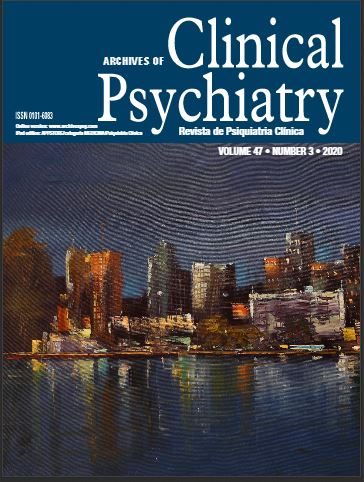Social communication impairments and restricted, repetitive patterns ("Kodawari") considered from the "Comprehension" section of the WISC-IV in autism spectrum disorder
DOI:
https://doi.org/10.1590/0101-60830000000237Palavras-chave:
Autism spectrum disorder, attention-deficit/hyperactivity disorder, content analysis, DSM-5, WISCResumo
Background: Many studies have used the Wechsler Intelligence Scale (WISC) to examine the characteristics of autism spectrum disorder (ASD). However, most studies have been based on profile analysis, not on content analysis. Objective: The objective of the present study was to apply the WISC-IV to clinical assessment of ASD and clarify how the characteristics of the disorder were reflected in specific items. Methods: The study participants were 20 patients aged 5-16 years diagnosed with ASD according to the Diagnostic and Statistical Manual of Mental Disorders, Fifth Edition (DSM-5). We recruited 20 patients with attention-deficit/hyperactivity disorder (ADHD) and 20 patients with other disorders (neurotic disorders) as controls. We then compared the scores of the ninth item of the WISC-IV ("Comprehension") among the three groups. Results: The differences observed between the ASD vs. the other disorders group were not significant by the standard scoring method. Thus, a two-level scoring method of 0 and ≥1 point was adopted. As a result, significantly more participants in the ASD group scored 0 points compared with the ADHD and other disorders group


